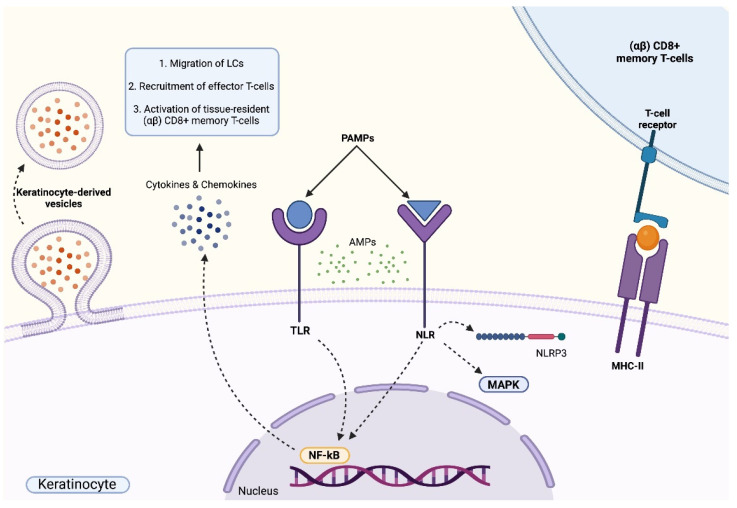Figure 3.
Immune functions of keratinocytes. Keratinocytes actively participate in early cutaneous immune defence. Membrane-bound Toll-Like receptors (TLRs) and nucleotide-binding oligomerization domain (NOD)-like receptors (NLRs) recognize pathogen-associated molecular patterns (PAMPs), an event that triggers the activation of intracellular pro-inflammatory signalling cascades. The activation of TLRs leads to the activation of the NF-кB signalling pathway that results in the release of various cytokines and chemokines that sustain inflammatory responses and favor the recruitment of activated inflammatory cells. The stimulation of NLRs is characterized by the production and secretion of pro-inflammatory cytokines due to the activation of the NLR family pyrin domain containing 3 (NLRP3) inflammasome platform and of the MAPK and NF-кB signalling pathways. The activation of TLRs and NLRs induces the release of antimicrobial peptides (AMPs). Keratinocytes are involved in the coordination of complex cross-talks with other immune cells, including antigen presentation to skin-resident (αβ) CD8+ memory T-cells or via secretion of keratinocyte-derived vesicles containing cargoes aimed at regulating various biological processes including proliferation, inflammation, differentiation, pigmentation and wound healing.

